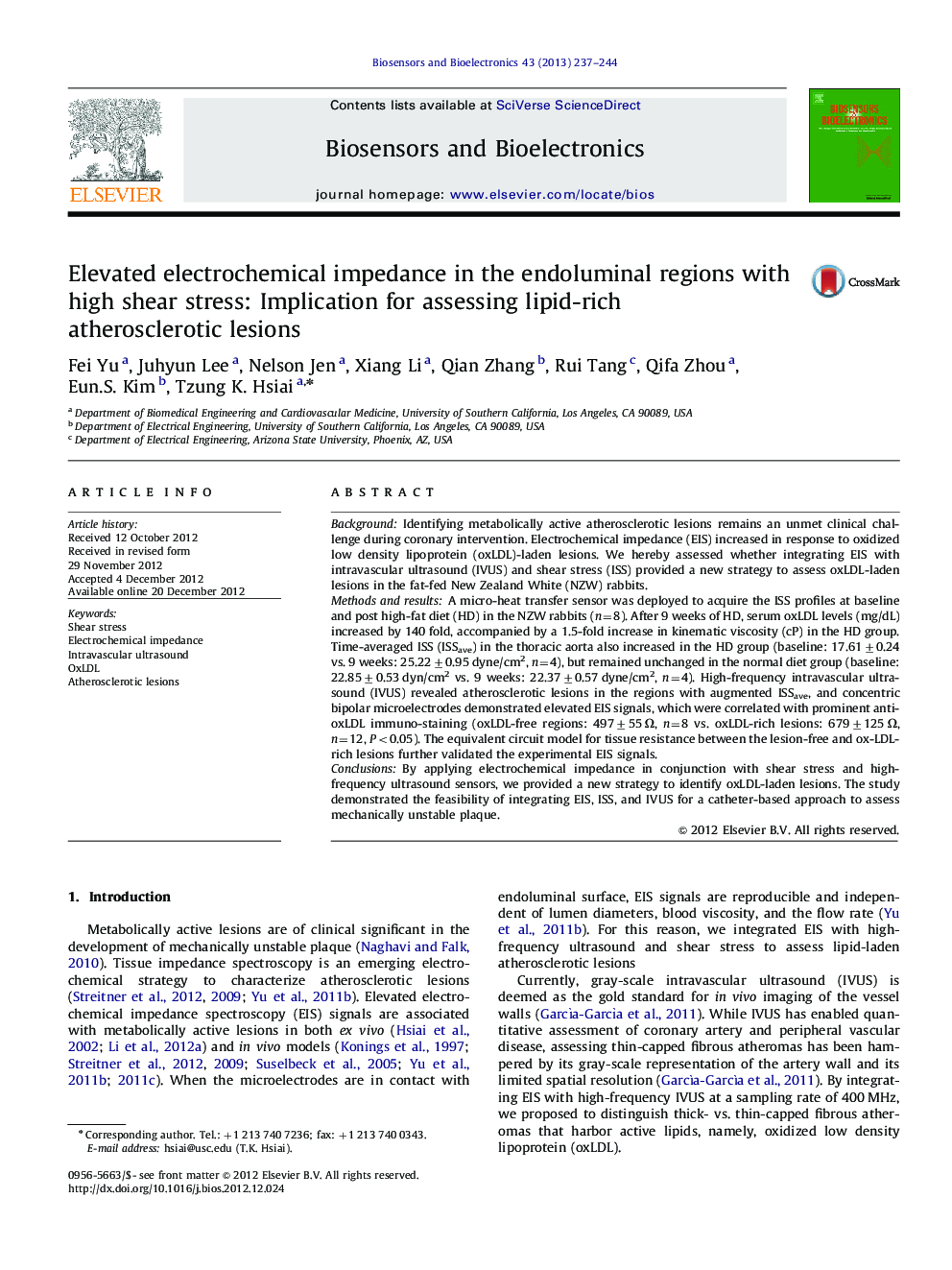| Article ID | Journal | Published Year | Pages | File Type |
|---|---|---|---|---|
| 866852 | Biosensors and Bioelectronics | 2013 | 8 Pages |
BackgroundIdentifying metabolically active atherosclerotic lesions remains an unmet clinical challenge during coronary intervention. Electrochemical impedance (EIS) increased in response to oxidized low density lipoprotein (oxLDL)-laden lesions. We hereby assessed whether integrating EIS with intravascular ultrasound (IVUS) and shear stress (ISS) provided a new strategy to assess oxLDL-laden lesions in the fat-fed New Zealand White (NZW) rabbits.Methods and resultsA micro-heat transfer sensor was deployed to acquire the ISS profiles at baseline and post high-fat diet (HD) in the NZW rabbits (n=8). After 9 weeks of HD, serum oxLDL levels (mg/dL) increased by 140 fold, accompanied by a 1.5-fold increase in kinematic viscosity (cP) in the HD group. Time-averaged ISS (ISSave) in the thoracic aorta also increased in the HD group (baseline: 17.61±0.24 vs. 9 weeks: 25.22±0.95 dyne/cm2, n=4), but remained unchanged in the normal diet group (baseline: 22.85±0.53 dyn/cm2 vs. 9 weeks: 22.37±0.57 dyne/cm2, n=4). High-frequency intravascular ultrasound (IVUS) revealed atherosclerotic lesions in the regions with augmented ISSave, and concentric bipolar microelectrodes demonstrated elevated EIS signals, which were correlated with prominent anti-oxLDL immuno-staining (oxLDL-free regions: 497±55 Ω, n=8 vs. oxLDL-rich lesions: 679±125 Ω, n=12, P<0.05). The equivalent circuit model for tissue resistance between the lesion-free and ox-LDL-rich lesions further validated the experimental EIS signals.ConclusionsBy applying electrochemical impedance in conjunction with shear stress and high-frequency ultrasound sensors, we provided a new strategy to identify oxLDL-laden lesions. The study demonstrated the feasibility of integrating EIS, ISS, and IVUS for a catheter-based approach to assess mechanically unstable plaque.
► Combined multi-modality to assess plaque development in fat-fed rabbit aorta. ► In vivo MEMS thermal sensor deployment revealed higher intravascular shear stress. ► Impedance sensor correlated lipid content with elevated electrochemical impedance. ► Elevated impedance in plaques was consistent with ultrasound imaging and histology. ► Three-modality approach improves lipid detection in unstable atherosclerotic plaque.
